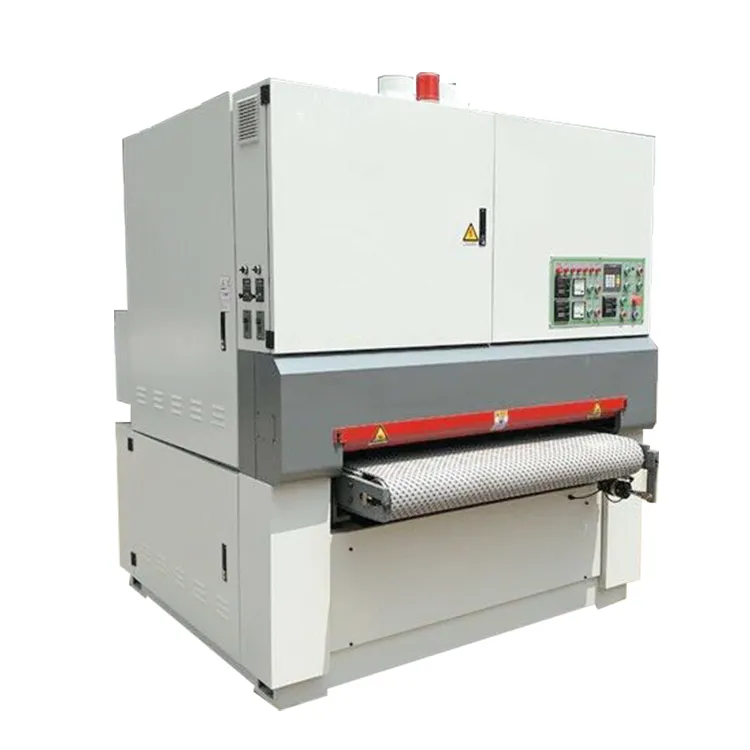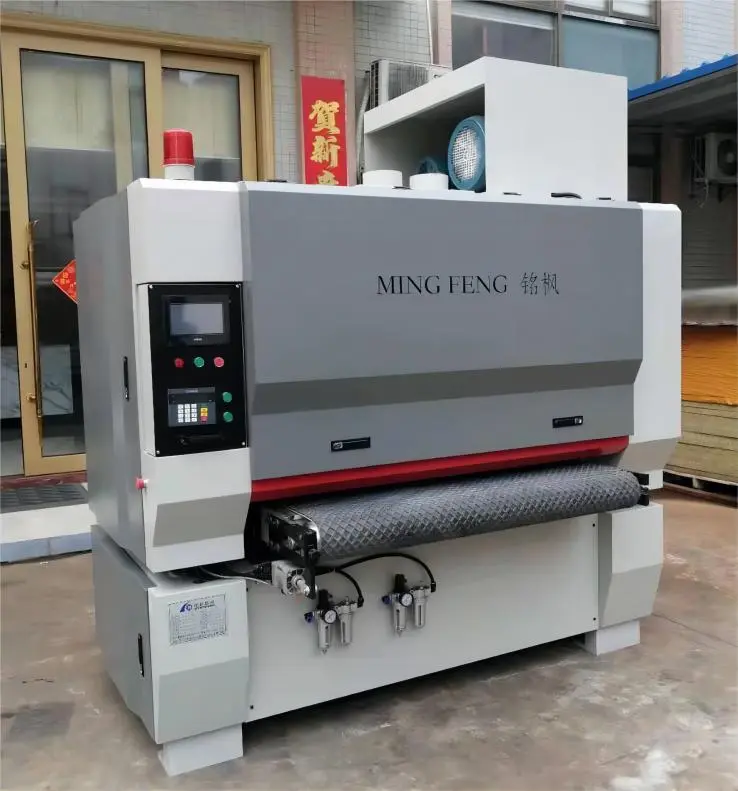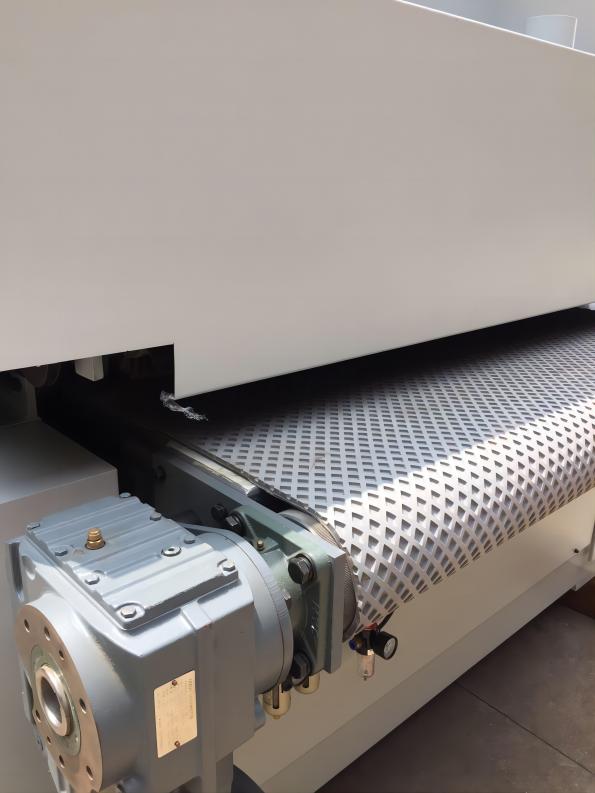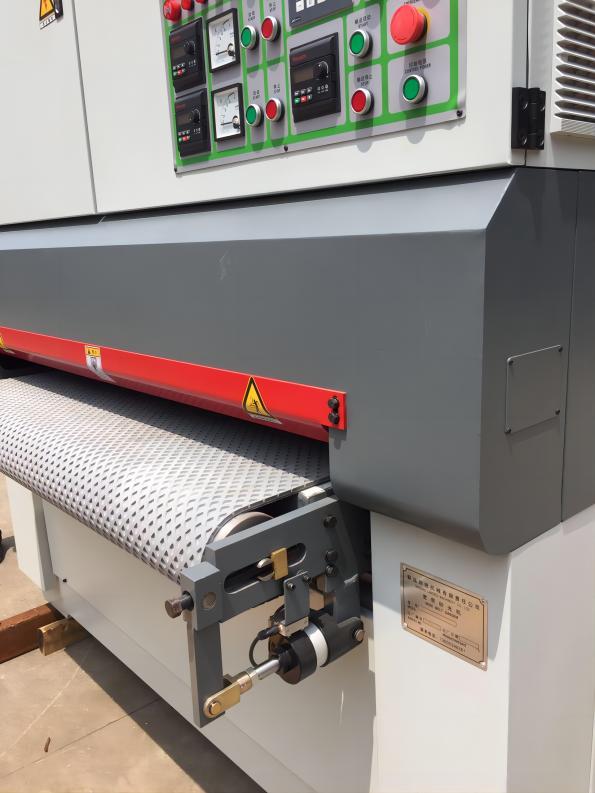In the modern wood processing and engineered wood products manufacturing industry, the industrial roller sanding machine is widely recognized as one of the core pieces of equipment. It uses the friction of a high-speed rotating roller and sanding belt or sandpaper to sand, smooth, and correct the thickness of board surfaces, making it an indispensable part of the production process for plywood, particleboard, and medium-density fiberboard (MDF).
While sanding operations may seem simple in industrial production, there are many common operational errors, some of which can seriously affect the surface quality of the boards and the lifespan of the equipment.
So, what are the biggest sanding mistakes to avoid when using an industrial roller sanding machine? This article will provide a detailed and professional explanation from multiple perspectives, including equipment principle analysis, process operation analysis, error type classification, and risks and solutions, offering comprehensive and professional guidance for industry professionals.

Industrial Roller Sanding Machine: Positioning and Working Principle
1. Application Positioning of Industrial Roller Sanding Machines
Industrial roller sanding machines are mainly used for surface smoothing, thickness correction, and coarse and fine sanding of large-format boards. It is widely used in the production of plywood, fiberboard, and particleboard, offering advantages such as high efficiency, uniformity, and batch processing capability. Compared to other types of sanders, the Roller Sanding Machine provides more concentrated pressure, enabling thickness control and surface finish to meet industrial production requirements.
2. Working Principle of an Industrial Roller Sanding Machine
The core of an industrial Roller Sanding Machine lies in the synergistic effect of the roller and sanding belt system. Its basic working principle is as follows:
• Roller rotation drives the sanding belt: The sanding belt adheres tightly to the roller surface, achieving continuous cutting of the board surface through high-speed rotation.
• Board feeding and pressure application: The board is fed into the sanding area via a conveyor mechanism, while the roller pressure system uniformly presses the board.
• Layer-by-layer sanding: The sanding belt friction removes excess thickness from the board surface, while smoothing surface imperfections.
• Automatic thickness measurement feedback: Modern industrial Roller Sanding Machines are typically equipped with a thickness measuring device, which automatically adjusts the roller pressure or sanding belt speed according to the board thickness, achieving precise control.
Based on the principles described above, industrial roller sanding machines can achieve the goals of uniform thickness, smooth surface, and stable processing quality while ensuring efficiency.

Industrial Roller Sanding Machines: Common Sanding Mistakes and Operational Deviations
During the operation of industrial roller sanding machines, operators often make mistakes due to insufficient experience or incomplete understanding of the process. The main mistakes include the following:
1. Improper Matching of Feed Speed and Roller Speed
• Feed too fast: Insufficient friction time on the sheet surface, resulting in surface roughness and inadequate thickness correction.
• Feed too slow: Prolonged contact between the sheet and the sanding belt can easily lead to surface burning, indentations, or over-cutting.
• Matching Requirements: Correct speed matching ensures that each section of the sheet is sanded evenly while avoiding excessive localized stress.
2. Improper Pressure Adjustment
• Excessive pressure: Indentations on the sheet surface, premature wear of the sanding belt, and even abnormal stress on the roller bearings.
• Insufficient pressure: Insufficient reduction, high surface roughness, and inability to meet subsequent coating requirements.
• Optimize Pressure: Pressure should be finely adjusted according to the thickness and hardness of the sheet material, as well as the specifications of the sanding belt, while also considering the differentiated needs of the coarse and fine sanding stages.
3. Neglecting Sanding Belt Condition and Maintenance
• Severely worn or loose sanding belts will lead to uneven cutting, surface streaks, or burn marks.
• Regularly checking the wear condition of the sanding belt, replacing the belt, or adjusting the belt tension are necessary operations to ensure processing quality.
4. Inadequate Use of Dust Collection System
• A large amount of dust is generated during grinding. If it is not removed in time, it will adhere to the sanding belt and rollers, affecting friction efficiency and leading to a decrease in grinding effect.
• Accumulated dust may also enter the transmission system, causing equipment failure or accelerating wear.
Through the analysis of the above operational deviations, it can be seen that although these errors each have their own characteristics, the one that truly affects the overall situation and is the most destructive is the improper control of thickness reduction.

The Biggest Sanding Error in Industrial Roller Sanding Machines: Improper Control of Thickness Reduction
Based on an analysis of operating principles and common pitfalls, the biggest sanding error to avoid when using industrial roller sanding machines is the failure to properly control the thickness reduction.
1. Excessive Reduction in a Single Step
• Impact on the sheet material: The surface may appear scorched, pitted, or wavy; internal fibers may be damaged; and thickness errors may exceed specifications.
• Impact on the equipment: Increased stress on the rollers and bearings; increased risk of belt breakage or burnout; increased motor load; and accelerated wear.
• Efficiency risks: Surface defects require rework, leading to decreased production line efficiency and increased labor and energy consumption.
2. Insufficient Reduction in a Single Step
• Surface defects not removed: Repeated sanding may not achieve the desired surface smoothness.
• Inefficiency: Increases the number of times the sheet material passes through the rollers, wasting production time and energy.
• Accumulated surface fiber damage: Repeated friction can damage the surface fiber structure, affecting subsequent coating or lamination effects.
Therefore, improper thickness reduction not only directly affects product quality but also has multiple negative impacts on equipment lifespan, production efficiency, and costs.

Industrial Roller Sanding Machine: The Multi-Dimensional Hazards of Incorrect Thickness Reduction
1. Damage to Board Quality
• Uneven thickness: Increases the difficulty of board installation or subsequent processing, affecting overall structural performance.
• Surface defects: Burn marks, streaks, indentations, etc., affecting aesthetics and feel.
• Fiber damage: Repeated reduction damages the wood fiber structure, reducing strength and bonding performance.
2. Equipment wear and tear
• Rollers and bearings: Excessive load increases wear and fatigue, shortening service life.
• Sanding belts: Prone to breakage or uneven wear, increasing maintenance costs.
• Transmission system: Repeated high-load operation leads to accelerated wear on gears, belts, and chains.
3. Impact on production efficiency and costs
• Reduced efficiency: Rework and repeated processing are time-consuming and labor-intensive, reducing production line efficiency.
• Energy waste: Overloading the motor or repeated processing increases energy consumption.
• Material Waste: Excessive cutting or damage to the sheet material leads to direct scrapping or secondary processing.
Improper control of thickness reduction has comprehensive and cumulative harmful effects, making it the most critical issue in operation.
Industrial Roller Sanding Machine: Methods to Avoid Major Sanding Errors
1. Define the Reasonable Reduction Range
• Coarse Sanding Stage: It is recommended to control the reduction amount per step at 0.3–0.6 mm.
• Fine Sanding Stage: It is recommended to control the reduction amount per step at 0.1–0.3 mm.
• Reason: Coarse sanding is used for thickness correction, while fine sanding is used for surface smoothing. Differentiating between stages helps control quality and efficiency.
2. Automatic Thickness Measurement and Closed-Loop Control
Modern industrial roller sanding machines are equipped with thickness detection devices that provide real-time feedback on sheet material thickness and automatically adjust roller pressure or feed speed to achieve closed-loop control and reduce human error.
3. Adjust Feed Speed and Roller Speed
• Match the speed according to the sheet material hardness, thickness, and sanding belt specifications to ensure stable reduction.
• Avoid feeding too quickly or too slowly to ensure uniform surface grinding.
4. Regularly inspect sanding belts and rollers
• Replace worn sanding belts promptly;
• Keep roller surfaces flat and clean;
• Ensure proper tension to prevent deviation or slippage.
5. Standardized operating procedures and training
• Establish standards for reduction amount, sanding belt replacement cycles, and pressure adjustment specifications;
• Provide systematic training to operators to ensure standardized and regulated operation.

Industrial Roller Sanding Machine: Why is improper thickness reduction control the "biggest" mistake?
1. Universality: Almost all operators may encounter this problem at different material types and production stages.
2. Irreversibility: Once the material is over-shaving or the fibers are damaged, it cannot be restored to its original state.
3. Comprehensive impact: Affects material quality, equipment lifespan, production efficiency, and costs.
4. Chain reaction: It can lead to surface defects, equipment wear and tear, rework, and waste, with problems accumulating.
Therefore, improper control of thickness reduction is considered the biggest and most avoidable sanding error when using industrial roller sanding machines.
Does XMF Machinery supply machines suitable for modern automated lines?
Our factory designs and manufactures coating equipment that can be easily integrated into modern automated production systems. Buyers can purchase machines tailored to fit existing workflows, reducing labor costs and improving efficiency. As a professional manufacturer, we provide high-quality solutions at reasonable prices, ensuring customers gain long-term value from every purchase.
